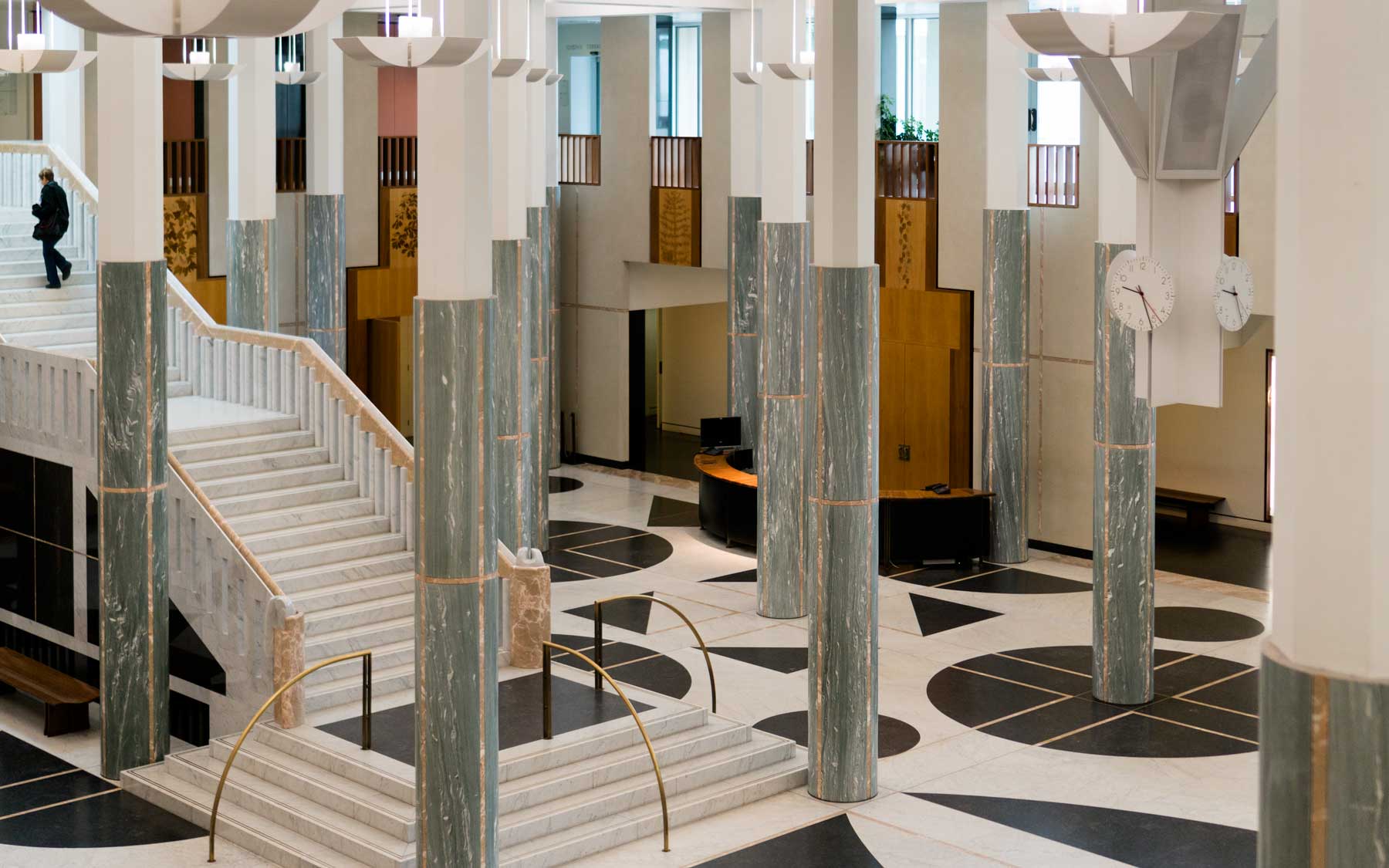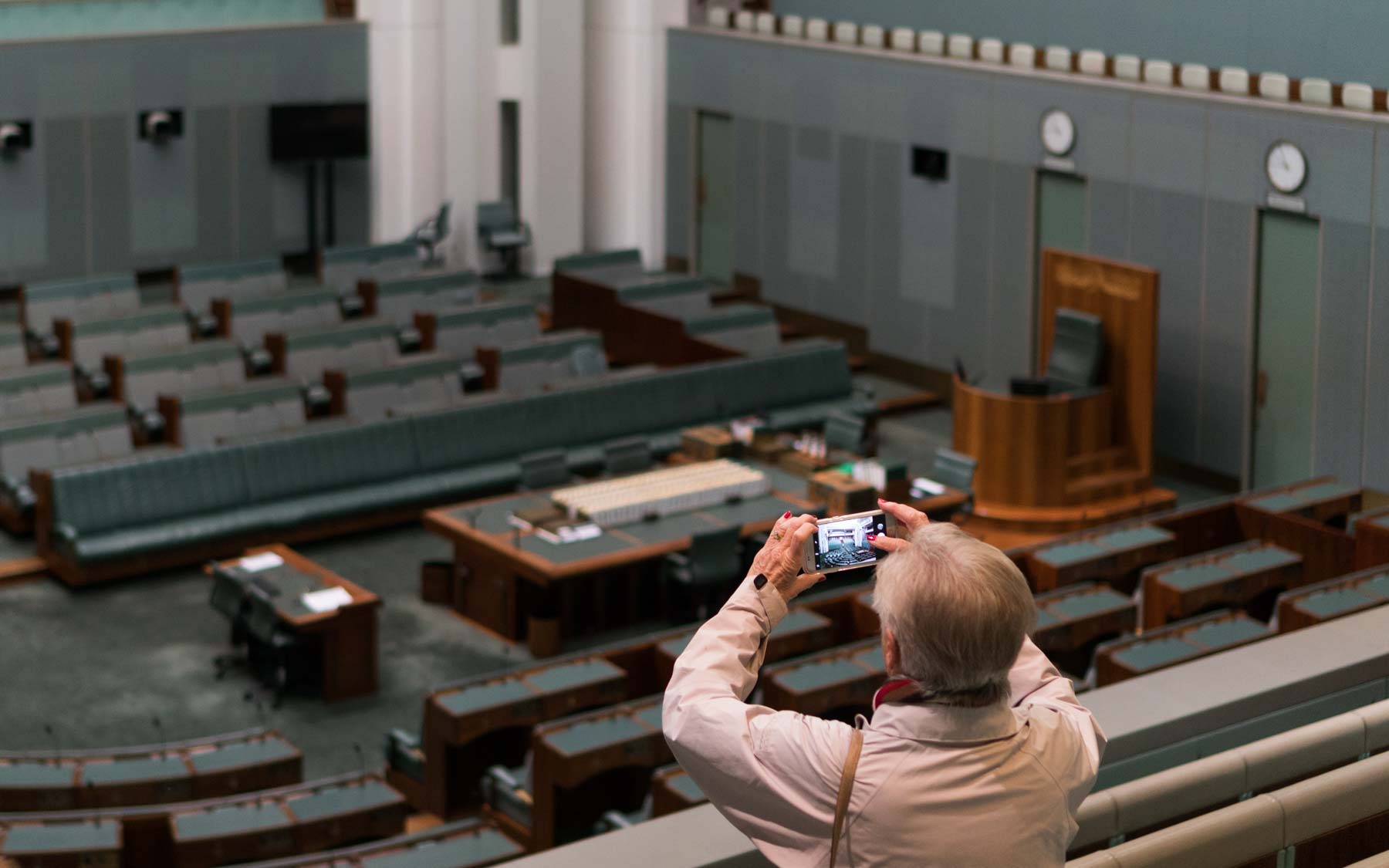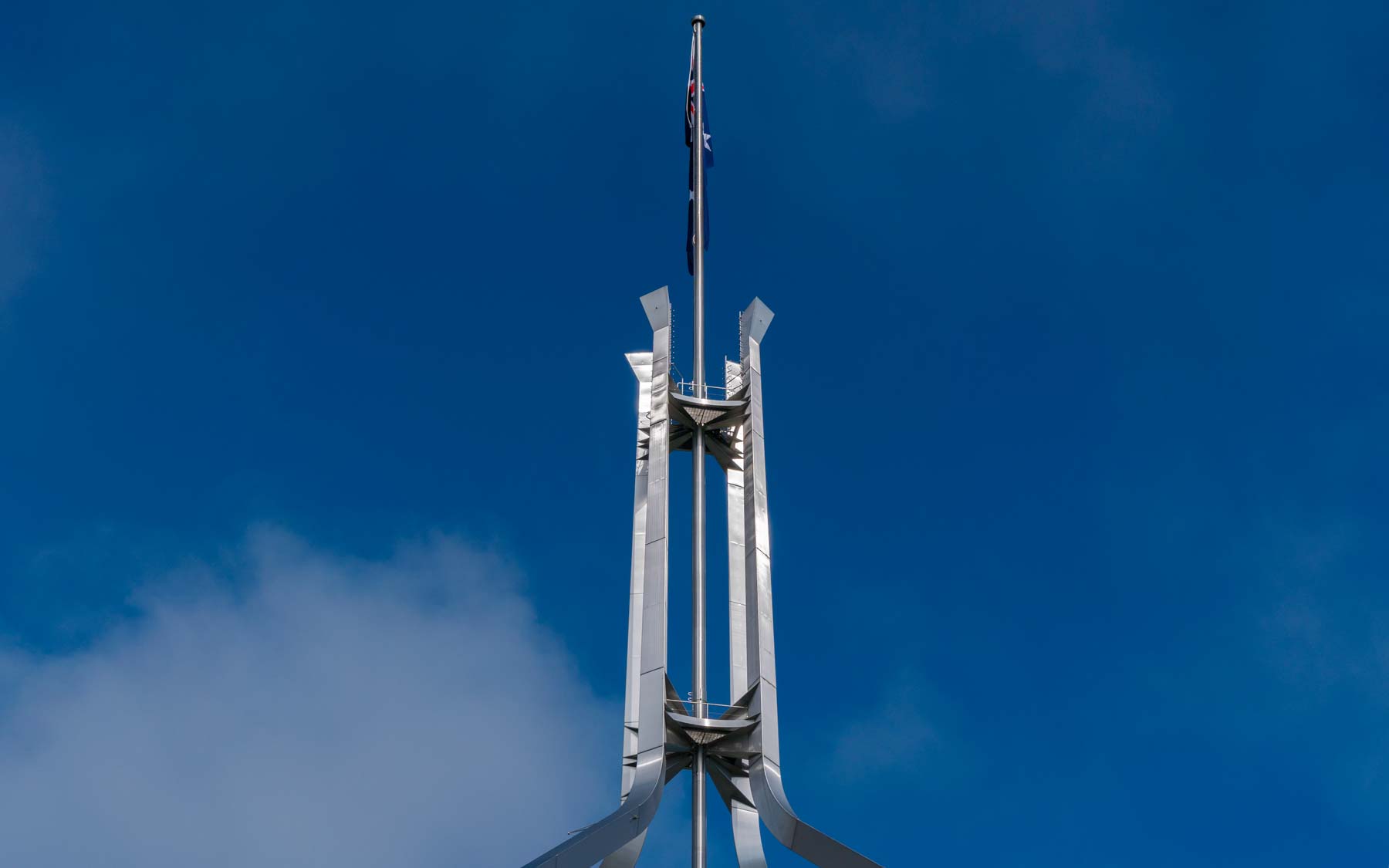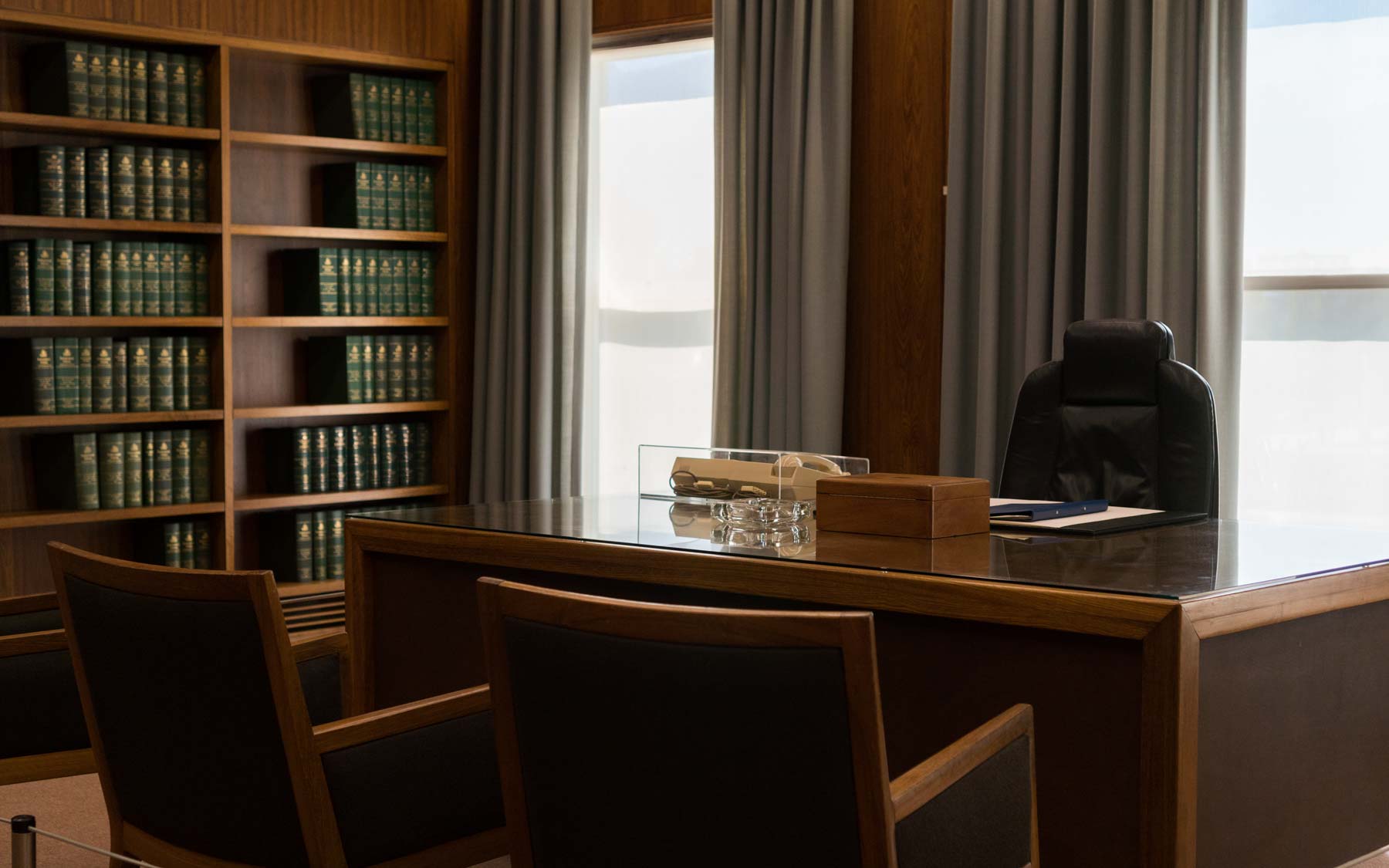Parliaments
21 May 2017

The entrance floor on ground level.
Canberra is an interesting place. A city purpose built to be the capital, located on a pimple of land in southern NSW. The Vatican of Australia. The aboriginal inhabitants of the area had been there for 21,000 years before Europeans settled the area but it would only take 50 years for said Europeans to wipe out their settlements. And so the building began as part of a long term vision to hand-make the capital city they wanted.
Canberra today is a slightly strange place. The air hangs thick with the intention of becoming a metropolis, but what’s actually here is a disproportionately large amount of infrastructure for a population of only 380,000. It’s all here for the only show in town; Parliament.
The last Parliament I’d been to was the Reichstag in Berlin. Entering the building required passing through a high level of security. This is not the case in Canberra. Comparatively, there is barely any security. A few heavies with machine guns just outside the entrance and a metal detector just inside, but nothing else besides that. You can even drive unhindered into the visitor’s car park which is located underneath Parliament House.
This low key, welcoming attitude makes for a more-interesting-than-expected visit which brings us to this post. Here’s 5 disparate photos of what you can encounter at Parliament House.
#1: The building uses as much Australian material as possible. One exception is the marble used as there isn’t the quantity available in Australia. There’s a way they could have saved on marble; don’t use so many columns in the ground floor. There’s a strangely large number of them in the design of this floor, especially for a building that was built only 30 years ago.

House of Representatives.
#2: As a New Zealander, the concept of a lower and upper house is foreign and makes no sense, but the tour guide does an excellent job of describing the subtleties between the Houses in Canberra and those from the motherland that these are designed off of.

Manicuring on the roof top.
#3: Parliament House is built on a small hill. Sort of. Simply building on the hill was not enough. Instead, the top of the hill was excavated and, once constructed, Parliament House only rises a small height above the original summit. The excavated material was lodged around Parliament House to form a manicured faux hill which you can walk over on the roof top.

The flag pole on parliament roof.
#4: Without doubt, the highlight for me; the Pièce De Résistance. As a sign of grandeur, a grossly over-engineered flag pole sits on top of Parliament House. Truth be told, the flag pole itself is nothing out of the ordinary, but the supporting structure – 4 arms of considerable weight that rise high and splay out over a wide footprint to connect to the tops of surrounding structures – are extremely OTT.

Bob Hawke's office in the original Parliament building.
#5: Parliament House has only been around for 30 years. Prior to this, Parliament was housed in a smaller, more intimate building just next door. Now known as Old Parliament House, it houses the regal sounding Museum of Australian Democracy. If that sounds kind of drab, I concur, but go for the building which is possibly the more interesting of the two Parliaments given that you can explore every part of it, especially the areas which would otherwise be off limits in a working Parliament House.